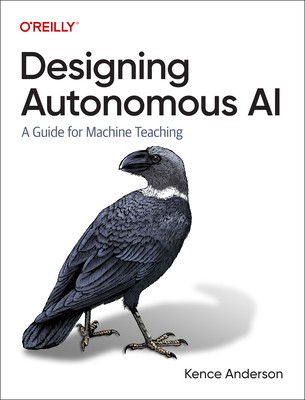
- We will send in 10–14 business days.
- Author: Kence Anderson
- Publisher: O'Reilly Media
- ISBN-10: 1098110757
- ISBN-13: 9781098110758
- Format: 23.1 x 17.5 x 1.5 cm, softcover
- Language: English
- SAVE -10% with code: EXTRA
Reviews
Description
Early rules-based artificial intelligence demonstrated intriguing decision-making capabilities but lacked perception and didn't learn. AI today, primed with machine learning perception and deep reinforcement learning capabilities, can perform superhuman decision-making for specific tasks. This book shows you how to combine the practicality of early AI with deep learning capabilities and industrial control technologies to make robust decisions in the real world.
Using concrete examples, minimal theory, and a proven architectural framework, author Kence Anderson demonstrates how to teach autonomous AI explicit skills and strategies. You'll learn when and how to use and combine various AI architecture design patterns, as well as how to design advanced AI without needing to manipulate neural networks or machine learning algorithms. Students, process operators, data scientists, machine learning algorithm experts, and engineers who own and manage industrial processes can use the methodology in this book to design autonomous AI.
This book examines:
- Differences between and limitations of automated, autonomous, and human decision-making
- Unique advantages of autonomous AI for real-time decision-making, with use cases
- How to design an autonomous AI from modular components and document your designs
EXTRA 10 % discount with code: EXTRA
The promotion ends in 18d.15:12:05
The discount code is valid when purchasing from 10 €. Discounts do not stack.
- Author: Kence Anderson
- Publisher: O'Reilly Media
- ISBN-10: 1098110757
- ISBN-13: 9781098110758
- Format: 23.1 x 17.5 x 1.5 cm, softcover
- Language: English English
Early rules-based artificial intelligence demonstrated intriguing decision-making capabilities but lacked perception and didn't learn. AI today, primed with machine learning perception and deep reinforcement learning capabilities, can perform superhuman decision-making for specific tasks. This book shows you how to combine the practicality of early AI with deep learning capabilities and industrial control technologies to make robust decisions in the real world.
Using concrete examples, minimal theory, and a proven architectural framework, author Kence Anderson demonstrates how to teach autonomous AI explicit skills and strategies. You'll learn when and how to use and combine various AI architecture design patterns, as well as how to design advanced AI without needing to manipulate neural networks or machine learning algorithms. Students, process operators, data scientists, machine learning algorithm experts, and engineers who own and manage industrial processes can use the methodology in this book to design autonomous AI.
This book examines:
- Differences between and limitations of automated, autonomous, and human decision-making
- Unique advantages of autonomous AI for real-time decision-making, with use cases
- How to design an autonomous AI from modular components and document your designs


Reviews